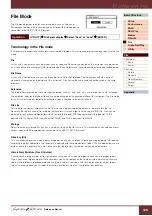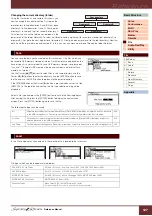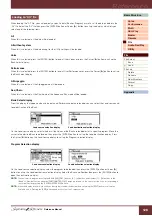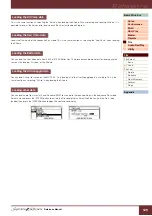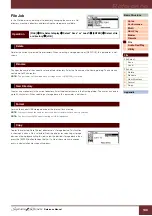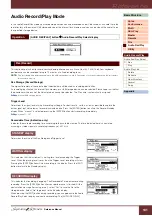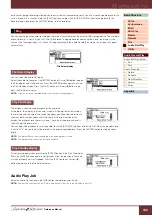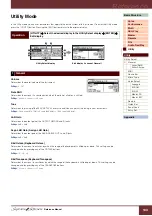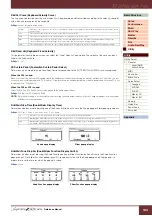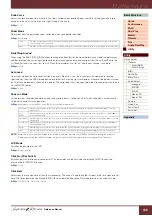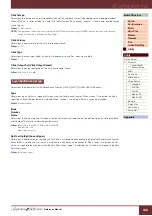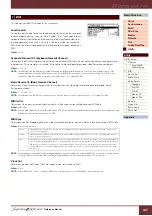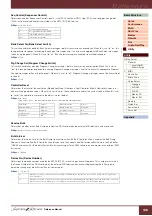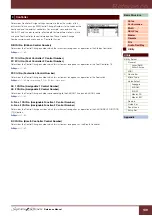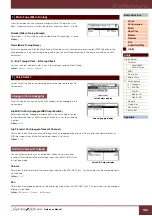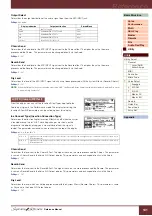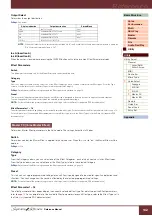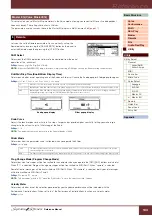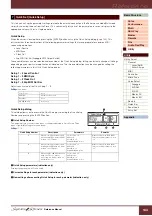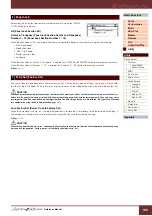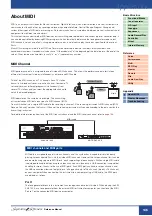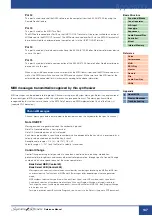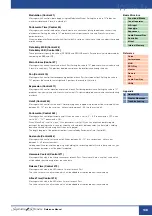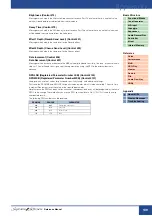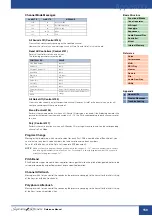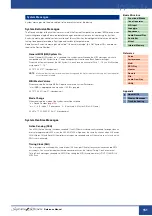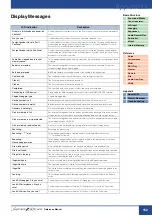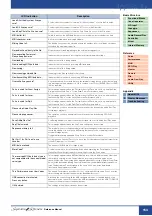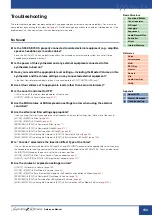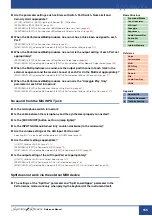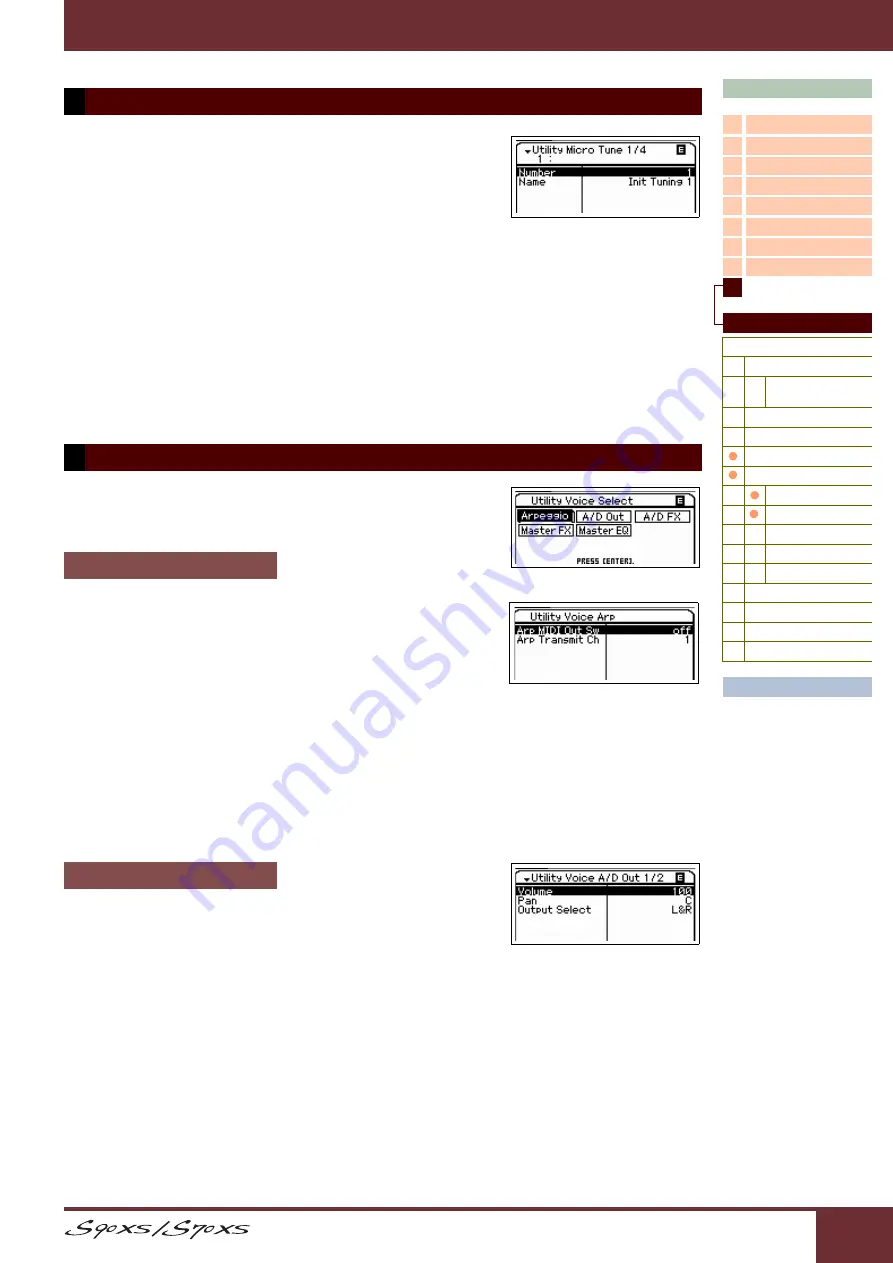
Reference Manual
Reference
140
From this display, you can create your original Micro Tuning in the User
Bank. Tuning one octave will affect the notes of all octaves from C -2 to G8.
Number (Micro Tuning Number)
Determines 1 – 8 Parts to which the created Micro Tuning setting is stored.
Settings:
1 – 8
Name (Micro Tuning Name)
Enters the desired name for the Micro Tuning. When the cursor is located here, pressing the [ENTER] button or the
Encoder knob calls up the Naming dialog, where you can enter the desired name. The name can contain up to 20
characters.
C – B (C Tuning Offset – B Tuning Offset)
Lets you tune the individual notes in cents to create your original Micro Tuning.
Settings:
-99 cent – +0 cent – +99 cent
Let you select the display including the parameters applied to the entire
Voice mode.
From this display you can make the MIDI settings for the Arpeggio in the
Voice mode.
Arp MIDI Out Sw (Arpeggio MIDI Output Switch)
Determines whether Arpeggio playback data in the Voice mode is output
to the external devices as MIDI messages. When this is set to on, the data
is output.
Settings:
off, on
Arp Transmit Ch (Arpeggio Transmit Channel)
Determines the MIDI transmit channel through which Arpeggio playback data will be sent to the external devices as
MIDI messages (when the Switch parameter above is set to on).
Settings:
1 – 16
You can set parameters such as output destination, volume, pan and
Insertion Effect related to the audio signal input from the MIC INPUT jack
in the Voice mode.
Volume
Determines the volume level of the audio signal input from the MIC INPUT jack. This parameter can be changed directly
via the Knob.
Settings:
0 – 127
Pan
Determines the stereo pan position of the audio signal input from the MIC INPUT jack. This parameter can be changed
directly via the Knob.
Settings:
L63 (far left) – C (center) – R63 (far right)
4 Micro Tune (Micro Tuning)
5 Voice Select
Arpeggio (Voice Arpeggio)
A/D Out (Voice A/D Output)
Voice Select display
Voice Arpeggio display
Voice A/D Output display

